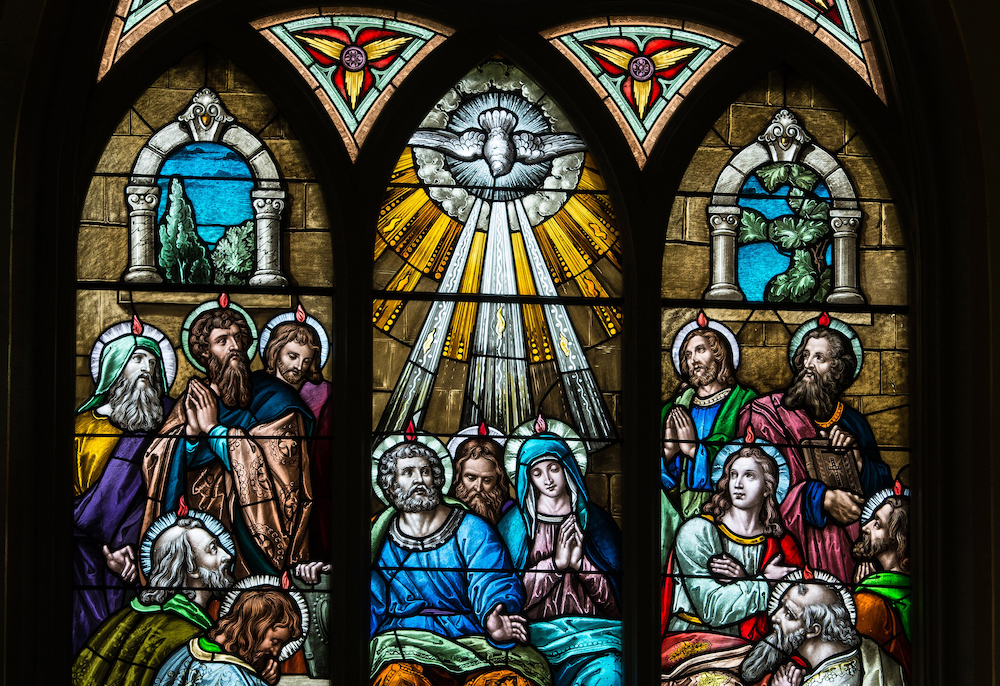- Feb 5, 2002
- 166,616
- 56,250
- Country
- United States
- Faith
- Catholic
- Marital Status
- Married
- Politics
- US-Others
Fire and water: These are two scriptural symbols of the Holy Spirit. We hear about them in the readings for Pentecost. In Acts, the apostles recall the “tongues of fire” that rested on the heads of Mary and the apostles at Pentecost. And John’s Gospel reveals the “rivers of living water” that well up in those whose faith thirsts for Christ. Let’s explore these two symbols of the Holy Spirit in search for a better understanding of the Spirit’s presence in the life of the Church.
First, the fire. The Holy Spirit is the Revelator, the One who reveals God to us. In the Old Testament, theophanies were often fiery. Think of the burning bush where Moses first encountered God, the “pillar of fire” that proceeded the Israelites through Egypt’s wilderness, and the “fire in the cloud” that rested above the tabernacle of God’s presence in the Book of Exodus. In each of these instances, the Holy Spirit was at work, revealing the “I am who am,” and drawing us into relationship with him.
In the Gospels, “God’s [same] Spirit, who reveals God, makes Christ known to us” (Catechism of the Catholic Church, No. 687). Thus, the Spirit and the Son are co-missioned. And, as John the Baptist said: “Christ will baptize [us] with the Holy Spirit and with fire” (Catechism, No. 696). Indeed, Christ sent the Holy Spirit to the Church, signified by the “tongues of fire” at Pentecost. Still, today, we come to see and to love God through the revealing power of the Holy Spirit. And we are united with God in the Spirit, who sets our hearts afire with love.
Continued below.

 www.oursundayvisitor.com
www.oursundayvisitor.com
First, the fire. The Holy Spirit is the Revelator, the One who reveals God to us. In the Old Testament, theophanies were often fiery. Think of the burning bush where Moses first encountered God, the “pillar of fire” that proceeded the Israelites through Egypt’s wilderness, and the “fire in the cloud” that rested above the tabernacle of God’s presence in the Book of Exodus. In each of these instances, the Holy Spirit was at work, revealing the “I am who am,” and drawing us into relationship with him.
In the Gospels, “God’s [same] Spirit, who reveals God, makes Christ known to us” (Catechism of the Catholic Church, No. 687). Thus, the Spirit and the Son are co-missioned. And, as John the Baptist said: “Christ will baptize [us] with the Holy Spirit and with fire” (Catechism, No. 696). Indeed, Christ sent the Holy Spirit to the Church, signified by the “tongues of fire” at Pentecost. Still, today, we come to see and to love God through the revealing power of the Holy Spirit. And we are united with God in the Spirit, who sets our hearts afire with love.
Continued below.

The symbolic meaning of fire and water
As we prepare for Pentecost Sunday, we reflect upon the two scriptural symbols of the Holy Spirit: Fire and water.
 www.oursundayvisitor.com
www.oursundayvisitor.com
